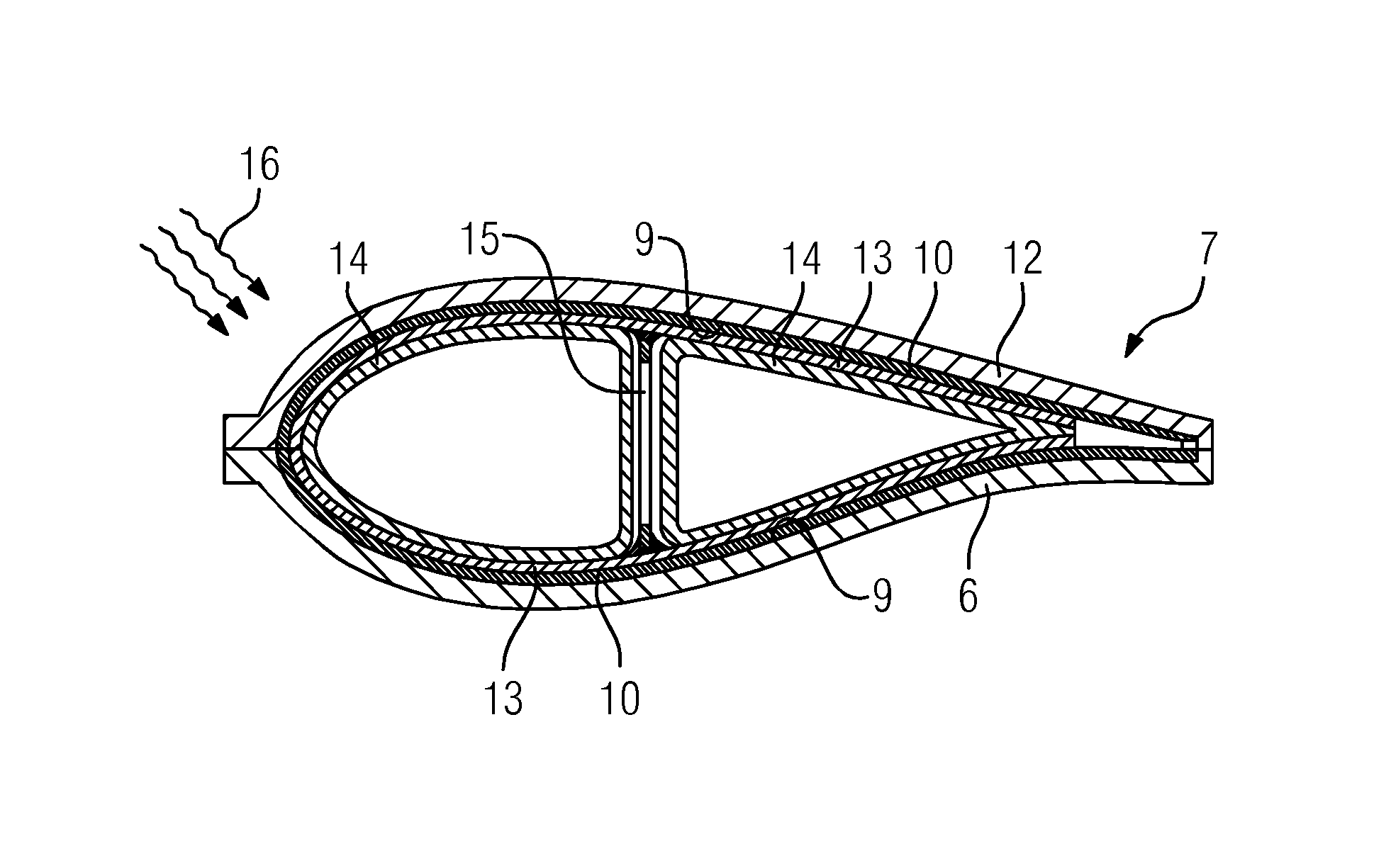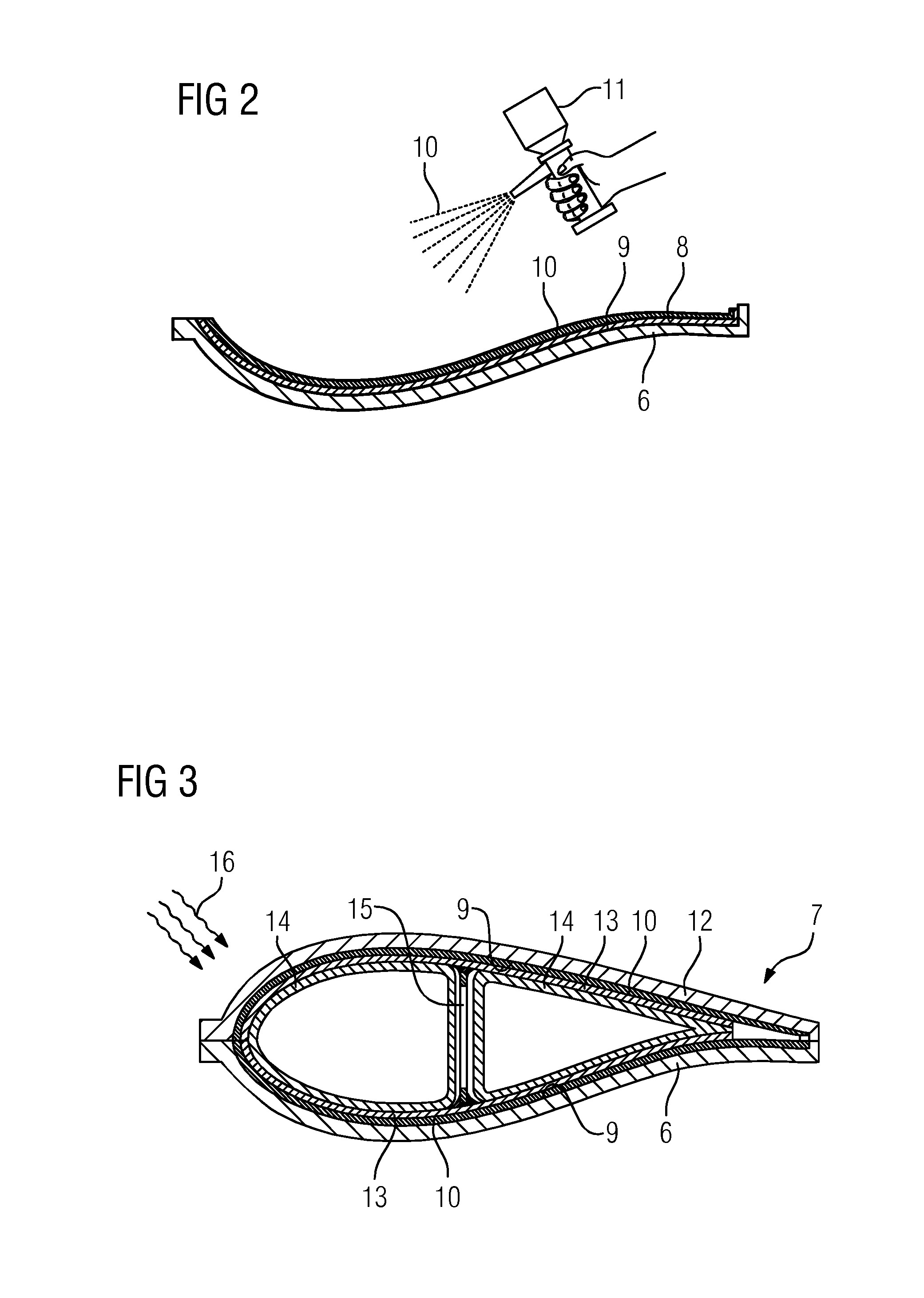Method for manufacturing a component for a wind turbine
- Summary
- Abstract
- Description
- Claims
- Application Information
AI Technical Summary
Benefits of technology
Problems solved by technology
Method used
Image
Examples
Embodiment Construction
[0046]In the Figures, like reference numerals designate like or functionally equivalent elements, unless otherwise indicated.
[0047]FIG. 1 shows a wind turbine 1 according to an embodiment.
[0048]The wind turbine 1 comprises a rotor 2 connected to a generator (not shown) arranged inside a nacelle 3. The nacelle 3 is arranged at the upper end of a tower 4 of the wind turbine 1.
[0049]The rotor 2 comprises three blades 5. Rotors 2 of this kind may have a diameter ranging from, for example, 30 to 160 meters. The blades 5 are subjected to high wind loads. At the same time, the blades 5 need to be lightweight. For these reasons, blades 5 in modern wind turbines 1 are manufactured from fiber-reinforced composite materials. Therein, glass fibers are generally preferred over carbon fibers for cost reasons. In addition, the blades 5 may each comprise one or more core members made of a lightweight material to reduce the weight of the blades 5. For example, the core members may be manufactured fr...
PUM
| Property | Measurement | Unit |
|---|---|---|
| Transparency | aaaaa | aaaaa |
| Heat | aaaaa | aaaaa |
| Reflection | aaaaa | aaaaa |
Abstract
Description
Claims
Application Information
 Login to View More
Login to View More - R&D
- Intellectual Property
- Life Sciences
- Materials
- Tech Scout
- Unparalleled Data Quality
- Higher Quality Content
- 60% Fewer Hallucinations
Browse by: Latest US Patents, China's latest patents, Technical Efficacy Thesaurus, Application Domain, Technology Topic, Popular Technical Reports.
© 2025 PatSnap. All rights reserved.Legal|Privacy policy|Modern Slavery Act Transparency Statement|Sitemap|About US| Contact US: help@patsnap.com



